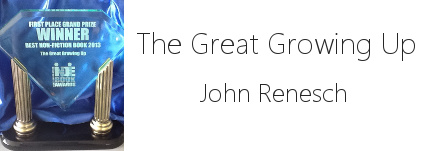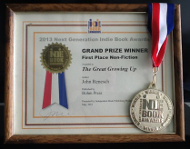Domains of Reality: Still Valid, Still Relevant
[This is an excerpt from my book Getting to the Better Future, originally published in 2000; I think the subject is as relevant today as it was nearly 20 years ago – JR]
The Titanic crew was complacent in their arrogance, believing that their ship was unsinkable. This complacency allowed them to be concerned over relatively trivial matters while taking the invincibility of their ship for granted. This was much like American auto manufacturers in the 1970s. The “Western way” of dealing with the form rather than the substance has its limitations. And, to some who are wedded to the American Way, this idea is pure heresy.
The East and the West have much to learn from each other. Certainly, the Japanese have learned much from their industrialized Western brothers and sisters. So have the Chinese and the Koreans. But what are we learning from our Eastern brothers and sisters?
Philosopher and consultant David Berenson has developed a matrix that makes distinctions among four differing perspectives of what is “real.” He calls it “The Four Domains of Reality.” The beginning of Berenson’s matrix is shown below:
| Domain #1 | Domain #2 | Domain #3 | Domain #4 |
| Context | Process | Form | Content |
The first two domains—Domains #1 and #2, Context and Process—are seldom recognized in the West since they are intangible and, therefore, less “real” according to consensus thinking in the industrialized societies. As I mentioned earlier, we in the West have a tendency to value Form (Domain #3) and Content (Domain #4) over these first two domains and thus see them as more “real.” The thinking is something like “if it can be measured, analyzed, or thought about, then it exists.” Of course the opposite corollary is also accurate: “If it can’t be seen or measured, it must not exist.”
The Form and Content domains are where empiricism lives. And they feed each other like the blueprint, the idea, or the plan (Form) can lead to the final structure, product, or event (Content).
Berenson goes on to other levels in each domain, expanding their meaning. So, in the domain of Content (Domain #4) there also exists perception, the physical reality, and sensation. Similarly, in the domain of Form (Domain #3), there exists the conceptual, the mental, and thinking activities. Here is his complete matrix:
Four Domains of Reality
Copyright 1999 © David Berenson
| 1. | 2. | 3. | 4. |
| Context | Process | Form | Content |
| Abstract | Experience | Concept | Perception |
| Spiritual | Emotional | Mental | Physical |
| Intuition | Feeling | Thinking | Sensation |
The industrialized mindset of the West is grounded in the fourth domain—Content, or the physical domain. In other words, there’s what “is” (Domain #4) and then there’s what we think about what “is”
(Domain #3).
Domain #2, where feelings, the emotional and the experiential reside, is unfamiliar to most people in the West. It is also uncomfortable for most Westernized people to talk about—especially for many men who have been conditioned to deny or suppress feelings.
In the past decade, I have noticed a huge gain in acceptance for process in business meetings, largely influenced by women’s participation in the workplace. In earlier years, process was looked upon as “wasting time” and shouts of “let’s get on with it!” could be heard whenever any processing got underway. And, usually, the shouts were from the men. Process has risen in acceptance as a valuable part of brainstorming, the creative process, and team-building, but only after overcoming some resistance from the bottom-line focused business minds.
The least understood and most ignored domain—the domain of Context, which includes the spiritual, abstract, and intuitive—is actually the generative domain, the source of all creativity, according to Berenson.
Context generates Process which translate to Form which results in Content. Said differently, the abstract generates experience, which results in concepts that lead to perceptions. The spiritual generates emotions that stimulate mental activity which manifests in the physical realm. Our intuition generates feelings which, in turn, evoke thinking that leads to sensations.
So, there is a strong possibility that the West has the creative process backwards!
The present-day collective consciousness is still operating as if everything starts with the physical—the domain of Content—and proceeds to flow from right to left. This shift in our thinking could be the “coming home” that spiritual disciplines throughout the ages have predicted—where we can stand grounded in the domain of spirit, more comfortable in the abstract and the immaterial, rather than standing steadfastly in the material world and discounting anything that isn’t physical or mental.
Berenson’s model demonstrates yet another way in which we need to think differently if we are to align ourselves with the way the universe works right now.




